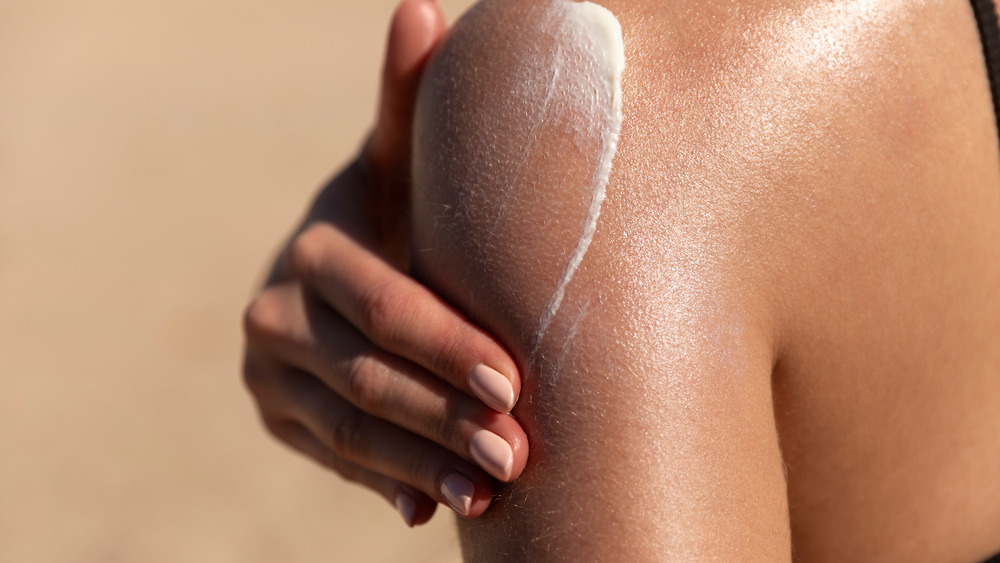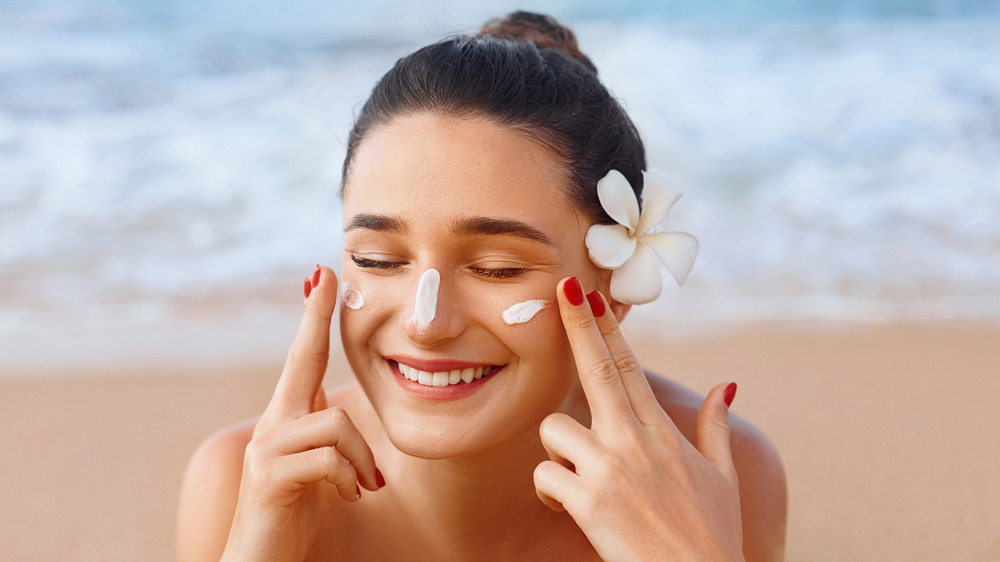The Truth About Mineral Sunscreens
As the natural products revolution continues, it's left many consumers to wonder which products are both safe and effective. Sunscreen is now one of those products with options that boast "clean" ingredients — but what's the real difference between chemical and mineral lotions? According to NPR, the FDA recently expressed concern over the possibility of synthetic ingredients in sunscreen absorbing into the bloodstream. Now, beachgoers all over have the option of grabbing mineral sunscreen or sticking with the classic.
Interestingly, the FDA also noted that only two additives found in traditional sunblock products are effective. Of the 16 active ingredients, only titanium dioxide and zinc oxide are the ones that work properly and don't pose safety concerns, the outlet notes. Other ingredients pose serious health risks because of their ability to absorb into the bloodstream. Avobenzone, oxybenzone, octocrylene, and ecamsule all readily moved beneath the skin, a study conducted by the FDA found — and these could impact hormone production.
Apparently, many common sunscreens on shelves today have been there for decades — far before new FDA regulations took hold. Dermatologist, Kanade Shinkai of the University of California, San Francisco explained to NPR that these products "didn't have the standard battery of testing that any medication being approved today would undergo."
Now, mineral options are quickly catching up to meet newer, safer standards. Plus, without the high chemical content, mineral sunscreens offer more environmentally friendly options as well.
Natural sunscreen filters UV rays through its mineral content
As for how mineral sunscreen works, the natural ingredients block out the harmful rays rather than the synthetic additives doing so. According to the Environmental Working Group, these options usually include zinc oxide and titanium dioxide — the two effective and safe ingredients that were present in synthetic sunscreens. These filter out the rays without the added chemicals that absorb into the bloodstream. In fact, studies even found traces of those filler ingredients in urine and breast milk, the outlet reports. With mineral sunscreen, you just get the two active ingredients without the harmful chemicals.
The Greatist explains that mineral sunscreen stays on top of the skin rather than absorbing into it — keeping the sun-blocking benefits but leaving the potentially hazardous process. Plus, mineral options don't require activation time; you can just apply and head into the sun rather than waiting 15 minutes for the chemical stabilizers to kick in. However, these options are less water-resistant so you'll need to reapply more frequently, particularly if you jump in the pool, the outlet notes.
When choosing a new product, check to make sure it contains zinc oxide and titanium dioxide, knowing that the former has a broader coverage spectrum. Just make sure to rub an adequate amount all over your skin and consistently reapply for a cleaner, greener time at the beach!

